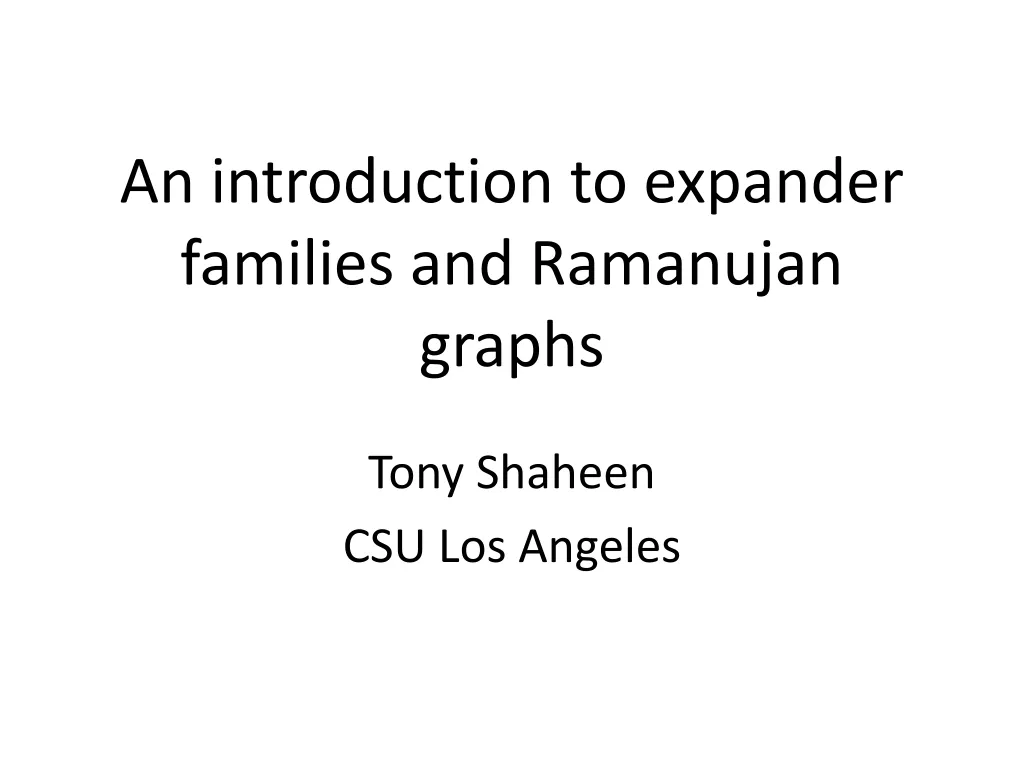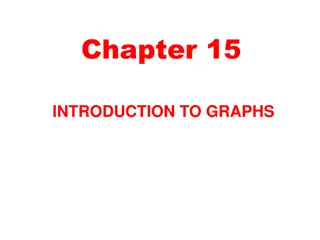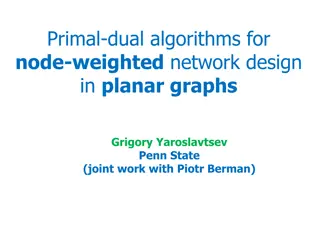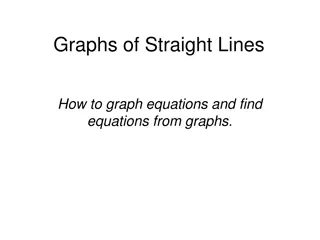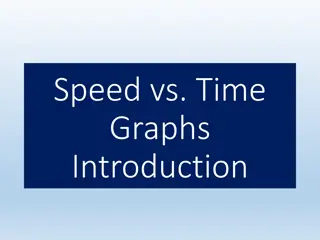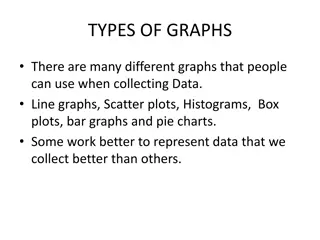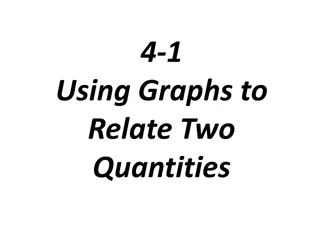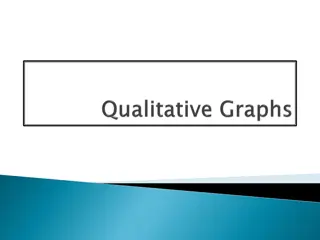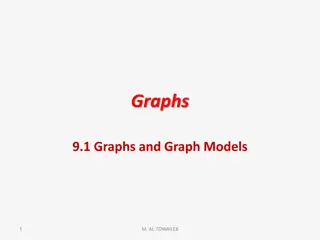
Online Nursing Course Quality Improvement Study
"Explore a study on the impact of Quality Matters certification on grades of RN-BSN students, highlighting change stages, results, and course improvements."
Download Presentation

Please find below an Image/Link to download the presentation.
The content on the website is provided AS IS for your information and personal use only. It may not be sold, licensed, or shared on other websites without obtaining consent from the author. If you encounter any issues during the download, it is possible that the publisher has removed the file from their server.
You are allowed to download the files provided on this website for personal or commercial use, subject to the condition that they are used lawfully. All files are the property of their respective owners.
The content on the website is provided AS IS for your information and personal use only. It may not be sold, licensed, or shared on other websites without obtaining consent from the author.
E N D
Presentation Transcript
ACKNOWLEDGMENT Scholarly Technology and Resources (STaR) started us on the Quality Matters journey by providing a template for all online courses that required us to meet the QM Rubric Standards 5thed (2014) Sean Orme and Donna Kay UALR faculty taught and provided refining feedback Drs. Elaine Gardner, Sheila Cox Sullivan, Jane Evans, and Kathy Lindsey UALR DON curriculum committee provided feedback and approval of changes
PRESENTATION LEARNING OBJECTIVES At the conclusion of this session, participants will be able to: 1. Describe the stages of change required for Quality Matters (QM) course certification 2. Describe changes in RN-BSN student grades pre/post QM certification 3. Discuss takeaways from the study regarding studied course improvements
INTRODUCTION What is the difference in grades of registered nurses (RN) enrolled in an online Bachelor of Science in Nursing (BSN) research class before and after Quality Matters certification? Study compares pre-certification and post-certification grades Pre-QM certification Fall 2014- Summer 2015: 9 sections (n = 149) Post-QM certification Fall 2015-Summer 2016: 11 sections (n = 185)
QM CERTIFICATION AUGUST 19, 2015 NURS3440 Research and Evidence Based Practice a core course for undergraduate licensed registered nurse to Bachelor of Science in Nursing (RN-BSN) completion program (experienced RN s average age 35 years) No change in student admission practices between the two academic years For accreditation, the same core content is taught in 7.5-8 week Fall and Spring semesters and 5 week Summer one of an academic year This certification mark recognizes that this course met Quality Matters Review Standards. (Quality Matters, 2016; Shattuck, Zimmerman, & Adair, 2014)
ADULT LEARNING THEORY/ANDRAGOGY 1) Students have multiple life demands 2) Educators facilitate learning, students are autonomous and self-directed 3) Integrated life experiences, to bring and share with peers 4) Goal directed and self-initiated 5) Authentic interactivity; active processing of experience and internalization of information; personally meaningful and conceptually coherent 6) Recognize value in learning 7) Must translate to practice environment
NURS3440 COURSE DESCRIPTION This course provides an overview of scientific evidence integrated into nursing practice. The focus is on knowledge, skills, and attitudes required for the research process, including evaluation and dissemination of best practices to improve health care outcomes. Further emphasis is on the significance of research as it contributes to the profession of nursing. An integrated practice project will be completed. Part of term course: Four credit hours (3 credit theory; 1 credit lab).
QUALITY AND SAFETY EDUCATION FOR NURSES (QSEN) COMPETENCIES Institute of Medicine (IOM) 1. Patient Centered Care (PCC) 2. Teamwork and Collaboration (T/C) 3. Evidence Based Practice (EBP) 4. Quality Improvement (QI) 5. Safety (S) 6. Informatics (I)
QSEN-BASED COURSE STUDENT LEARNING OBJECTIVES (CSLO) At the completion of this course, the student will: 1. Collaboratively investigate current research and its application to practice to improve patient centered care. (PCC, T/C, & EBP) 2. Relate research processes to continuous quality improvement. (QI) 3. Integrate evidence from a variety of sources to foster a culture of safety. (S & EBP) 4. Apply ethical and legal standards as they relate to information technology and data security (I) QM 2.1; 2.5
PRE-QM STUDENT CHALLENGES IN 3440 Student fear of research, confusion, and struggle to: Identify what is and is not research Recognize what Introduction/Methods/Results/Discussion (IMRD) sections content is expected in scientific research articles Use a group process to form a guiding population, intervention, comparison, outcomes, time (PICOT) or population, intervention, and outcomes (PIO) question for selecting research articles for the discussions, paper, and poster Recognize quantitative and qualitative research differences Distinguish between systematic reviews and a literature review Compare current research to existing guidelines
PRE-QM GRADING CHALLENGES IN 3440 Low grades and quality: Discussion posts low grades Evidence based practice (EBP) draft and paper disorganized with low grades EBP poster not ready for conference presentations Multiple citation/reference errors using APA 6th edition (2011) format Multiple hours of instructor grading/feedback for all the above
PRE-QM CONTENT CHALLENGES IN 3440 Absent: Emphasis on ethical and legal standards applied to research Civic engagement focused integrated practice project with measured outcomes of quality improvement Dissemination of EBP findings beyond the classroom
METHODS IRB approval 5-6-16 Data collection began 7-27-16 after first part of term courses completed
MODULE-1 CHANGES M O D U L E 1 Restated QSEN-Based Course Student Learning Objectives (CSLOs) Simplified Module SLOs tied to Course SLOs and QSEN competencies: Collaboratively discuss evidence based practice, quality improvement, safety and patient centered care topics in health care (QSEN met T/C, EBP, QI, S, PCC, I) (CSLO met 1, 2, 3 & 4) Collaboratively discuss a question to guide the online search for evidence related to the topic (QSEN met T/C, EBP, I) (CSLO met 1 & 3) QM 2.1-2.5
CHANGES IN MODULE-1 CONTENT B E G I N H E R E / M O D U L E 1 Self-introduction videoon research experience, group s hot topics supported by statistics Graded group worksite Emphasized guidelines as ethical legal standards Moved DB #1 to Module 2 Added privacy policies for external tools Added APA References page of all sources used by the instructor Removed embedded librarian and used a specialized nursing library resource page (Pickens & White, 2015) QM 1.1-1.9; 3.2; 3.5; 4.1-4.6; 5.1-5.4; 6.1-6.5; 7.1-7.4; 8.1-8.5
CHANGES MODULE-2 CONTENT M O D U L E 2 Added description and examples of quantitative and qualitative research with self-check quiz Added ethical and legal implications for using APA to credit/reference researchers DB#1 Clarified PICO/PIO instructions in initial post and required guidelines in the interactive post QM 3.5; 4.1-4.6
PRE-QM D#1 INITIAL POST Initial post: After reading about four traditional nursing practices that are not supported by evidence (Makic, Martin, Burns, Philbrick, & Rauen, 2013), describe some common practices in your worksite not supported by evidence. State the PICOT question your group chose to guide your literature review, and discuss scholarly research engines you used to find research articles for your PICOT topic. Describe how you know the article you selected is really a research article. In _____ (population), what is the effect (association or relationship) of ________ (new intervention), in (comparison) to ______ (old intervention), on __________(health outcome) by ______ (time frame)? Student wrote: Wow...thinking im going ti have to drop the course
POST-QM D#1 INITIAL POST Initial post: 1. State the PIO or PICO question your group chose 2. List the scholarly research engines (i.e. PubMed, CINHAL, and others) you used to find a research article for your topic 3. Describe how you know the article you chose is a sole primary quantitative research article, a sole primary qualitative research article, or a systematic review that is a meta-analysis of multiple quantitative studies or a meta-synthesis of multiple qualitative studies State the main message of the research article 4. QM 5.1; 5.2; 6.1-6.4; 8.1; 8.4
PRE-QM D#1 INTERACTIVE POST Interactive peer post: After reading your peers posts, respond to one. Use a scholarly source that does not qualify as a research article to support your opinion. Describe how you know the scholarly source you used is not considered a research article. (Hint: Non-research scholarly, academic sources include guidelines, white papers or official statements of professional organizations, expert opinion, editorials, literature reviews, and uncompleted research proposals. Non-research sources that are neither scholarly nor academic include Wikipedia and personal opinion blogs and should never be used.) The interactive peer post is due Sunday 11:59 pm.
POST-QM DISCUSSION-1 INTERACTIVE POST Interactive peer post: Post guidelines that most closely align with your PIO/PICO and answer the following questions: 1) Who wrote the guidelines and what level of expertise do they have? 2) What criteria are used to measure the strengths and limitations of each piece of evidence used in creating the guidelines? 3) What evidence based recommendations are made? 4) What measures are taken to prevent bias and keep the guidelines current?
PRE-QM DB GRADING RUBRIC I N I T I A L P O S T I N T E R A C T I V E P O S T Prior to the deadline, demonstrates a high level of critical thinking supporting position with 1 stellar genuine research article < 5 years old Prior to the deadline, each student refers to 1 peer by name with a high level of critical thinking response supported by 1 current rigorous scholarly source that is not a research article. QM 3.1-3.5
POST-QM DB GRADING RUBRIC I N I T I A L P O S T I N T E R A C T I V E P O S T *States clear, exemplary PICO *Exhibits exemplary incorporation of instructions /feedback *Addresses the topic/critique in an exemplary manner *Uses 1 exemplary, current (< 5 years), and relevant type of research article requested for the module *Exemplary contribution to group work site. *Responds 1 time to peer post *Addresses the topic in an exemplary manner *Uses 1 exemplary current scholarly source that is not a research article.
CHANGES IN MODULE-3 CONTENT M O D U L E 3 Quantitative design, rigor, validity, reliability, statistical methods overview with self-check quiz Plagiarism defined DB#2 initial post imbedded quantitative critique
CHANGES TO DB#2 INITIAL POST Initial Class discussion post: 1. State your updated group's PIO or PICO. 2. Identify the main variables (specify any independent/dependent variables) of the primary quantitative article and the study design 3. Describe the purpose or main hypothesis of the quantitative study and what difference it will make in solving the problem 4. State what ethical steps were taken to protect study participants, how many participants were studied, and what their social, cultural and diverse characteristics were (e.g.. country, ethnicity, gender) 5. State what measures were taken to enhance quantitative study rigor, validity, reliability, objectivity, and generalizability, what the limitations were, and how believable the findings are 6. List the most important statistical findings of the quantitative study and give any p-values or proxy confidence intervals 7. Explain how the quantitative article directly answers your PIO/PICO
CHANGES IN MODULE-4 CONTENT M O D U L E 4 Qualitative design Trustworthiness Self-check quiz DB#3 initial post imbedded qualitative critique Deleted ungraded draft of EBP paper -students were writing two separate papers with two different sets of research articles
CHANGES MODULE-5 CONTENT M O D U L E 5 Limited systematic reviews to meta-analysis or meta-synthesis in this basic course focused on learning the difference in quantitative and qualitative research Provided examples DB#4 imbedded meta-analysis and meta-synthesis critiques
CHANGES MODULE-6 CONTENT M O D U L E 6 Ethical and legal standards in publishing, citing, referencing research APA self-check quiz EBP paper template and example
POST-QM EBP PAPER INSTRUCTIONS The discussion forums were designed to assist you in writing your group EBP paper. The discussion on PIO/PICO question and guidelines will help you in writing the Introduction portion. The discussions on quantitative, qualitative, and systematic reviews will help you in writing the Methods, Results, and Discussion sections. Be sure to read instructor feedback and incorporate changes into your paper.
POST-QM EBP PAPER INSTRUCTIONS Select the 3 strongest and most current research articles for the EBP paper. Use one quantitative article, one qualitative article, and either a meta-analysis (or a second quantitative one) or meta-synthesis (or a second qualitative one) per group. Compare your findings to current guidelines and practices.
CHANGES MODULE-7 CONTENT M O D U L E 7 Poster template Poster example Example of pre/post test questions and scores from sharing the poster with 3-6 nurses in the community List of local research conferences to submit their posters
PRE-QM EBP POSTER INSTRUCTIONS Download the final version of your group's poster and click Submit before midnight Friday. Each individual in your group is to submit the same version. Use template and grading rubric.
POST-QM EBP POSTER CHANGES Added dissemination of poster information beyond the classroom into the community using two pretest and posttest questions with the scores from 3-6 nurses found in the community or at a poster presentation convention Provided poster template with what was in each IMRD section Provided a poster example Provided an example of using superscript numbering for citations/references Provided an example of pretest/posttest questions with answers from nurses in the community
POST QM COURSE CONTENT M O D U L E 8 Ethical and legal standards on fabrication, falsification, plagiarism Nursing Code of Ethics with Interpretative Statements Reflective summary
T-TEST FOR QM PRE/POST SCORES DB#1 Std Dev Std Err T Group N Mean 95% CI DF Pr> |t| Value 1 149 17.18 3.41 0.28 3.06 3.85 250.95 -2.01 0.037 2 184 17.84 2.32 0.17 2.11 2.58 Diff (1-2) -0.66 2.86 0.32 1.30 -0.01 Reported based on unequal variance, inequality of variance established via Folded F method (p<0.001)
T-TEST FOR QM PRE/POST SCORES DB#2-4 Std Dev Std Err Pr> |t| DB N Mean 95% CI DF T Value 149 184 149 185 149 185 17.7 18.06 17.79 17.92 2.03 2.05 2.30 2.23 0.17 0.15 0.19 0.16 1.83 1.87 17.42 17.59 1.98 2.19 2.29 2.29 18.17 18.24 2.49 2.68 331 -1.33 0.18 2 332 -0.49 0.62 3 18.25 17.93 2.21 2.41 0.18 0.18 332 1.25 0.21 4 In each of these assignments, the variance between groups was calculated to be equal by the Folded F method.
T-TEST FOR QM PRE/POST SCORES PAPER Std Dev Std Err Group N Mean 95% CI DF T Value Pr> |t| 4.80 6.03 1 149 62.07 5.35 0.44 331 -2.46 0.01 5.10 6.27 63.56 5.63 0.42 2 184 5.11 5.96 1.49 5.50 0.61 Diff (1-2)
T-TEST FOR QM PRE/POST SCORES POSTER Std Dev Std Err Group N Mean 95% CI DF T Value Pr> |t| 91.1544 7.5076 0.6150 6.7411 8.4724 1 149 331 -2.06 0.04 92.8560 7.5155 0.5541 6.8181 8.3732 2 184 -1.7016 7.5120 0.8279 6.9808 8.1314 Diff (1-2) For this series of data, the Folded F Method verified that the variances were equal: therefore, pooled t-test reported
REFLECTIVE SUMMARY Std Dev Std Err T Pr> |t| Group N Mean 95% CI DF Value 28.09 3.84 0.31 27.47 28.71 331 0.06 0.95 1 149 28.06 3.66 0.27 27.53 28.59 2 184 .026 3.74 0.41 Diff (1-2) Variances equal, reported pooled method t-test
T-TEST FOR QM PRE/POST COURSE SCORES Reflective Summary Group Std Dev Std Err T N Mean 95% CI DF Pr> |t| Value 252.3 14.878 6 20.801 2 18.39 1.22 249.9 254.7 1 149 327 -1.40 0.16 255.0 1.53 252.0 258.0 2 185 -2.73 2.0252 -6.72 1.25 Diff (1-2) For this data, the variances were considered unequal, so Satterthwaite analysis is reported.
DISCUSSION Following revision of course to meet standards for QM certification, students showed significant improvement in scores on: 1.Discussion board #1 2.EBP paper 3.EBP poster Assignments were changed to better align with course description and SLOs Sequential steps for assignments were rearranged Instructions were simplified and more orderly Rubrics were expanded and more specific Collaborative learning (Shattuck, 2013) measured by contribution to group work was graded with each assignment
DISCUSSION The course required numerous revisions. Based on professional nursing growth, grades, student satisfaction surveys, faculty input, be willing to:
REFERENCES American Psychological Association. (2011). Publication manual of the American Psychological Association (6th ed.). Washington, DC: Author. Pickens, K., & Witte, G. (2015). Circle the wagons and bust out the big guns! Tame the wild west of distance librarianship using Quality Matters TM benchmarks. Journal of Library & Information Services in Distance Learning, 9, 119-132. doi: 10.1080/1533290X.2014.946352 Quality Matters. (2016). Higher ed program: Rubric. Retrieved from https://www.qualitymatters.org/rubric Shattuck, K. (2013). Results of review of the 2011-2013 research literature [Report]. Retrieved from https://www.qualitymatters.org/node/2307/download/2013%20lit%20review%20summary%20rep ort%2011-25-13-revised-ks.pdf Shattuck, K., Zimmerman, W. A., & Adair, D. (2014). Continuous improvement of the QM rubric and review processes: Scholarship of integration and application. Internet Learning, 3(1), 25-34. Retrieved from http://digitalcommons.apus.edu/cgi/viewcontent.cgi?article=1030&context=internetlearning
KEY TO LEARNING Based on Revised Bloom s, Skiba (2013) Remember Understand Apply Analyze Evaluate Create
ADULT LEARNING Busy, but motivated adults Course is a necessary intrusion in life Home Work Need to move forward
LEARNING FAST TO IMPLEMENT WELL Bryk (2015) Focus on sources of variability in performance Refine quality Supports complex work Working together to accomplish more
9 CS Course-Content (Sowan & Jenkins, 2013). Communication-Clarity Connections (Cooper, 2014)-Collaborate (Hensel, 2014) Challenge-Completion Climate
CARE QUALITY OUTCOMES AND RETENTION OF STUDENTS Clinical Nurse Leaders (Bender et al., 2016) Adopting Clinical Model Diagnosis Prescription Intervention Evaluation Target Completion and Retention (Johnson et al., 2016).

